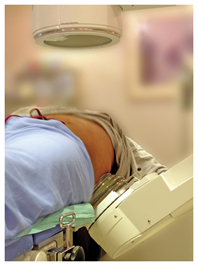

Urologic Diseases Research Updates
Spring/Summer 2008
Urinary Tract Stones Pose Challenges for Researchers

Lithotripters are used to break up kidney stones.The National Institute of Diabetes and Digestive and Kidney Diseases (NIDDK) hosted a 2-day symposium recently to share information about potential research on and treatment for urolithiasis, a growing and increasingly expensive health problem in the United States.
Urolithiasis—the formation of stones in the urinary tract—affects up to 15 percent of the U.S. population, costing the health care system more than $2 billion annually, according to Yair Lotan, M.D., a symposium speaker and assistant professor in the department of urology at the University of Texas Southwestern Medical Center at Dallas.
The incidence of urolithiasis peaks between the ages of 20 and 60. A promising strategy for reducing health care costs related to urolithiasis, Lotan said, might be promoting primary and secondary prevention strategies through education of high-risk populations.
Identifying appropriate medical expulsive therapies (MET)—administering muscle relaxants to hasten the expulsion of stones without surgical intervention—and educating patients and practitioners about them could help decrease costs of stone therapy.
Lotan said 10 percent of people with urolithiasis will have a recurrence of stones within 1 year, 35 to 50 percent within 5 years, and 50 percent or more by 10 years. According to Lotan, improvements in the medical management of people who form recurrent stones are needed, including better guidelines, the use of MET, and the timing of surgery.
Treatments for Urolithiasis
The most common treatment for urolithiasis is extracorporeal shock wave lithotripsy, according to Christopher Saigal, M.D., M.P.H., associate professor in the department of urology at the David Geffen School of Medicine, University of California, Los Angeles.
However, lithotripsy results in a higher rate of stone recurrence, depending on the size and location of the stone, compared with other treatments.
Other options for treating stones include dietary therapy, medication, and surgery.
Researchers, clinicians, and industry representatives who attended the meeting identified several areas of study for potential NIDDK research funding, including
- adjuvant therapy clinical trials
- improved stone removal technology
- development of a lithotripter rating system
- creation of a stone registry
Robert A. Star, M.D., director of the NIDDK’s Division of Kidney, Urologic, and Hematologic Diseases, suggested several funding methods for urolithiasis research. For example, the National Institutes of Health (NIH) has a new funding mechanism for investigator-initiated, modest-sized trials with costs between $700,000 and $1.5 million annually. The U34 and U01 funding mechanisms also can support implementation and full-scale trial phases.
Star also suggested collaborating with the Department of Veterans Affairs for large trials, partnering with the pharmaceutical industry, and using Multicenter Clinical Study Implementation Planning Grants, which are designed to support the early steps in the development of a complicated, multicenter, clinical trial. Star added that plans for future research will have to be designed within a framework of limited funding since the “era of large NIH budget increases is over.”
The NIDDK’s Urologic Diseases in America Compendium includes a chapter about urolithiasis and is available at www.kidney.niddk.nih.gov/statistics/uda/index.htm. For more information about NIDDK research and funding, go to www2.niddk.nih.gov/Research.
NIH Publication No. 08–5743
July 2008
[Top]
|






